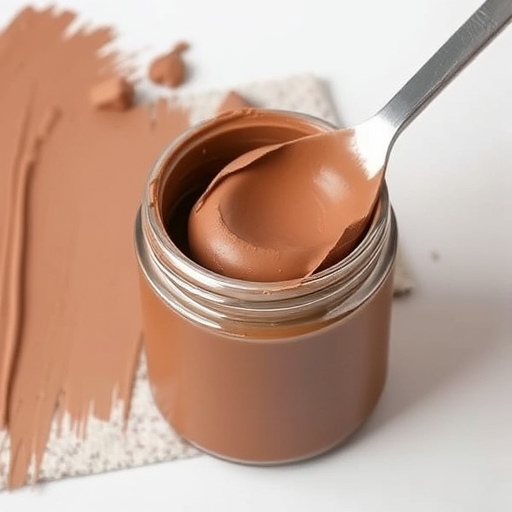How Do You Make Brown Paint?
Creating brown paint at home can be a fun and rewarding process, especially for artists, DIY enthusiasts, and hobbyists. Brown is a versatile color that can be used in a variety of applications, from painting and crafts to home decor. In this comprehensive guide, we will explore the different methods to make brown paint, the color theory behind it, and some tips for using brown paint effectively.
Understanding Color Theory
Before diving into the specifics of making brown paint, it’s essential to understand the basics of color theory. Brown is considered a neutral color, and it can be created by mixing complementary colors or by mixing primary colors.
Primary Colors
- Red
- Blue
- Yellow
- Green (Blue + Yellow)
- Orange (Red + Yellow)
- Purple (Red + Blue)
- Start by mixing equal parts of red and yellow to create orange.
- Gradually add blue to the orange mixture until you achieve the desired brown shade.
- Cocoa Powder: Gives a rich, dark brown.
- Coffee Grounds: Results in a textured, earthy brown.
- Spices: Such as cinnamon or turmeric can add a unique hue and scent.
- Flat Brushes: Great for covering large areas.
- Round Brushes: Ideal for detail work.
- Fan Brushes: Useful for texture and blending.
- Canvas: Works well with acrylic or oil paints.
- Paper: Ideal for watercolor or gouache.
- Wood: Use acrylic or chalk paint for a rustic look.
- Glazing: Apply a thin, transparent layer of brown over dried paint for depth.
- Dry Brushing: Use a dry brush technique to create a textured effect.
- Brown can be mixed with other colors to create shades like beige, tan, or even darker hues. Experiment with different combinations to find the perfect tint.
Secondary Colors
Tertiary Colors
These are made by mixing a primary color with a secondary color.
Creating Brown
Brown can be created through several methods:
1. Mixing Complementary Colors: This method involves mixing colors that are opposite each other on the color wheel.
2. Mixing Primary Colors: This method involves combining red, yellow, and blue.
Methods to Make Brown Paint
Method 1: Mixing Complementary Colors
One effective way to make brown paint is by mixing complementary colors. Here are some common complementary pairs that can be used:
| Color Pair | Resulting Brown Shade |
|---|---|
| Red + Green | Dark Brown |
| Blue + Orange | Warm Brown |
| Yellow + Purple | Earthy Brown |
Steps:
1. Choose Your Colors: Select two complementary colors from the table above.
2. Mix in a Palette: Use a palette knife or brush to mix equal parts of each color.
3. Adjust the Shade: If the brown is too dark, add a bit of white or yellow. If it’s too light, mix in a little more of the darker complementary color.
Method 2: Mixing Primary Colors
You can also create brown by mixing the three primary colors.
Steps:
1. Gather Your Colors: You will need red, yellow, and blue paint.
2. Mix the Primary Colors:
3. Fine-tune: Adjust the ratios to get the brown shade you want. More red will create a warmer brown, while more blue will produce a cooler brown.
Method 3: Using Natural Pigments
For those interested in a more organic approach, natural pigments can be used to create brown paint. Here are some natural sources of brown pigments:
Steps:
1. Choose Your Natural Pigment: Select a pigment based on the desired shade and texture.
2. Mix with a Binder: Combine the natural pigment with a binder like water, glue, or acrylic medium to create a paste.
3. Adjust Consistency: Add more binder or pigment as needed to achieve the desired consistency.
Tips for Using Brown Paint
Once you have created your brown paint, here are some tips to maximize its effectiveness:
Choose the Right Brush
Consider the Surface
Layering Techniques
Mixing with Other Colors
Frequently Asked Questions
How do I make a lighter shade of brown?
To lighten brown paint, you can mix in white or a lighter color such as yellow or beige.
Can I make brown paint with just two colors?
Yes, you can make brown using two complementary colors. However, using three colors (red, yellow, and blue) often yields a more balanced brown.
What is the best medium for brown paint?
The best medium depends on your project. Acrylics are versatile and quick-drying, while oils provide a rich texture and longer drying time.
How can I achieve different shades of brown?
Experiment with different ratios of the primary colors or complementary colors. Adding white can lighten the shade, while adding black can darken it.
Conclusion
Creating brown paint is a straightforward process that can be tailored to your specific needs and preferences. Whether you choose to mix complementary colors, primary colors, or use natural pigments, the possibilities are endless. By understanding color theory and experimenting with various techniques, you can create a range of beautiful brown shades for your artistic endeavors.
Whether you are painting a landscape, a portrait, or even crafting home decor items, knowing how to make brown paint opens up a world of creative opportunities. So gather your materials, put your skills to the test, and enjoy the process of making your own brown paint!

